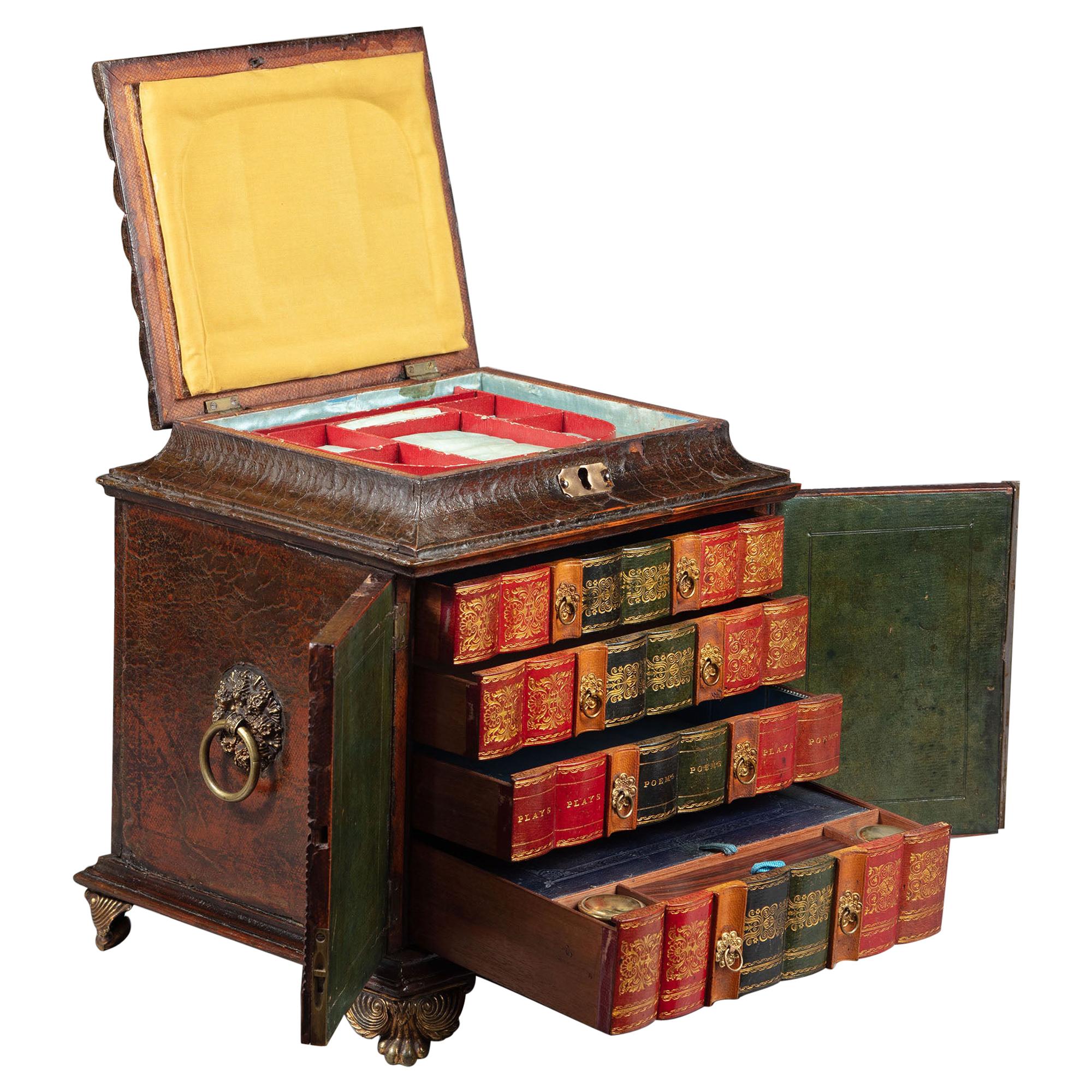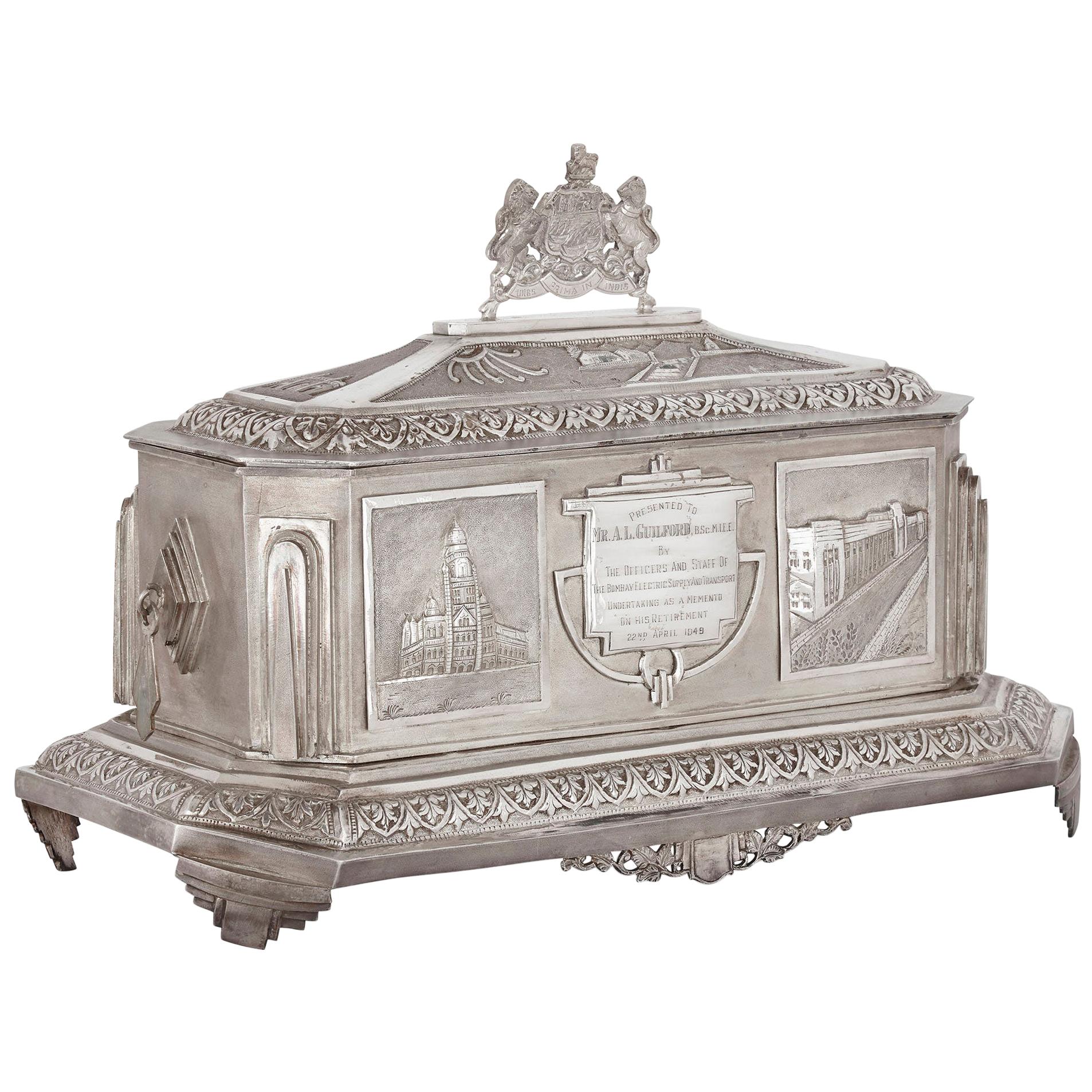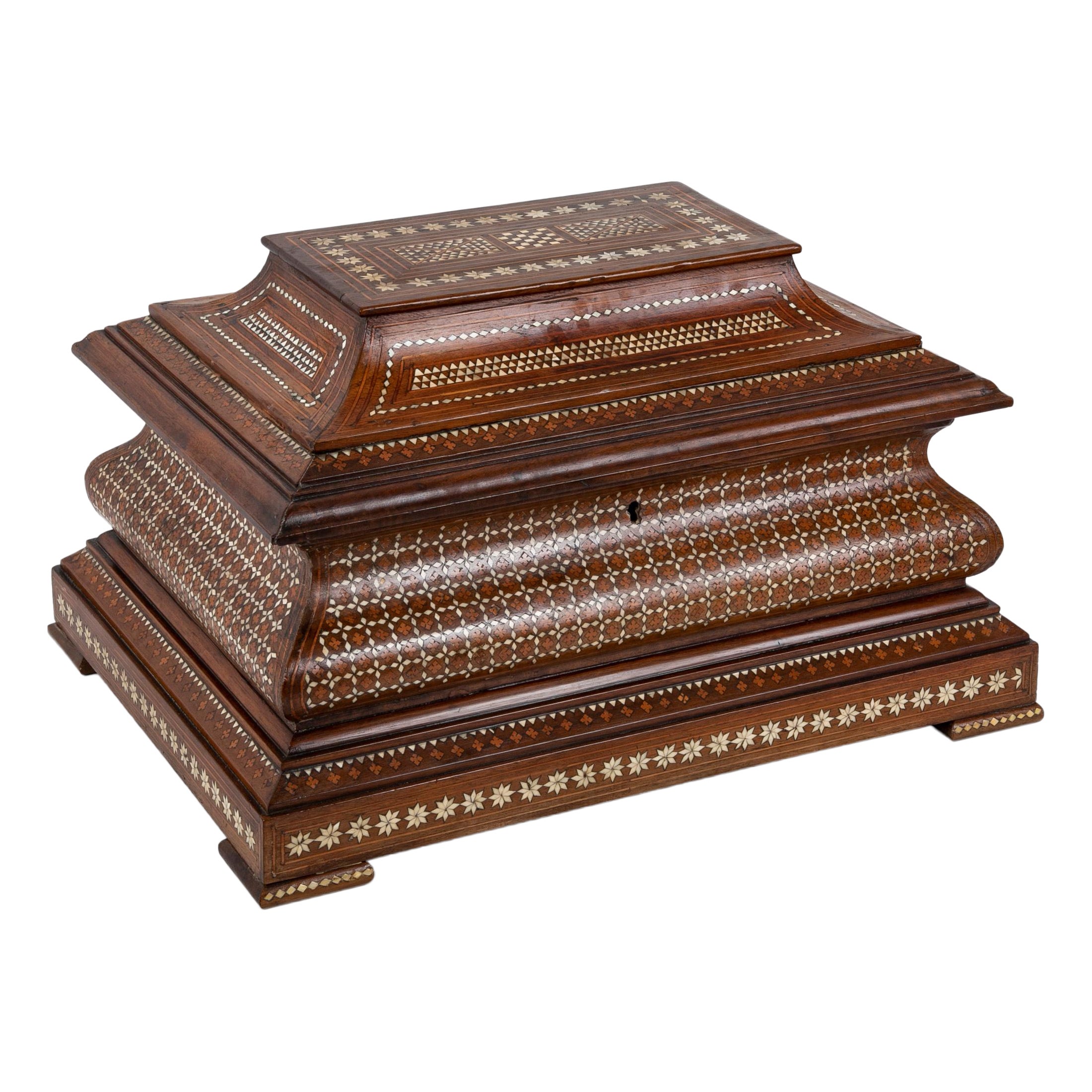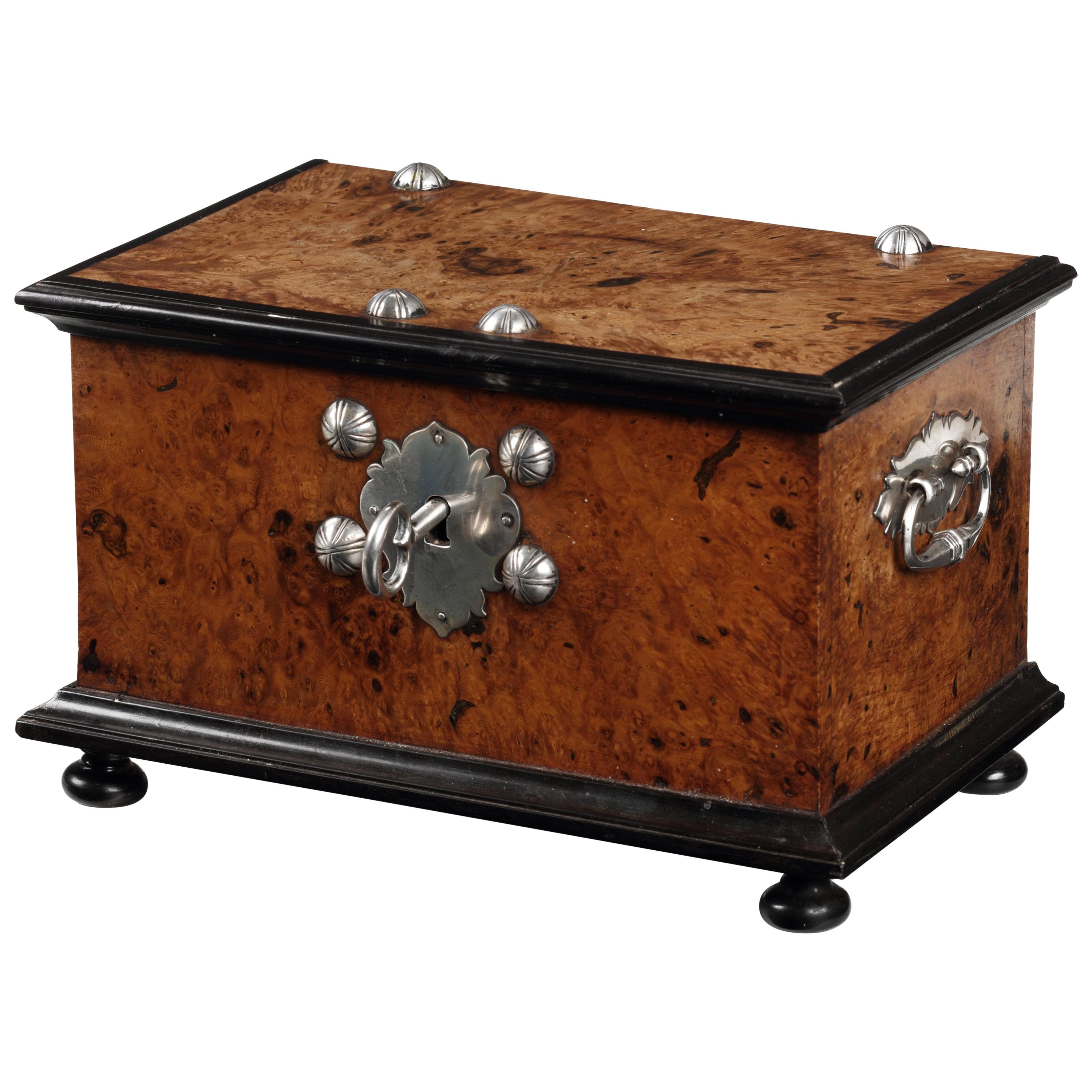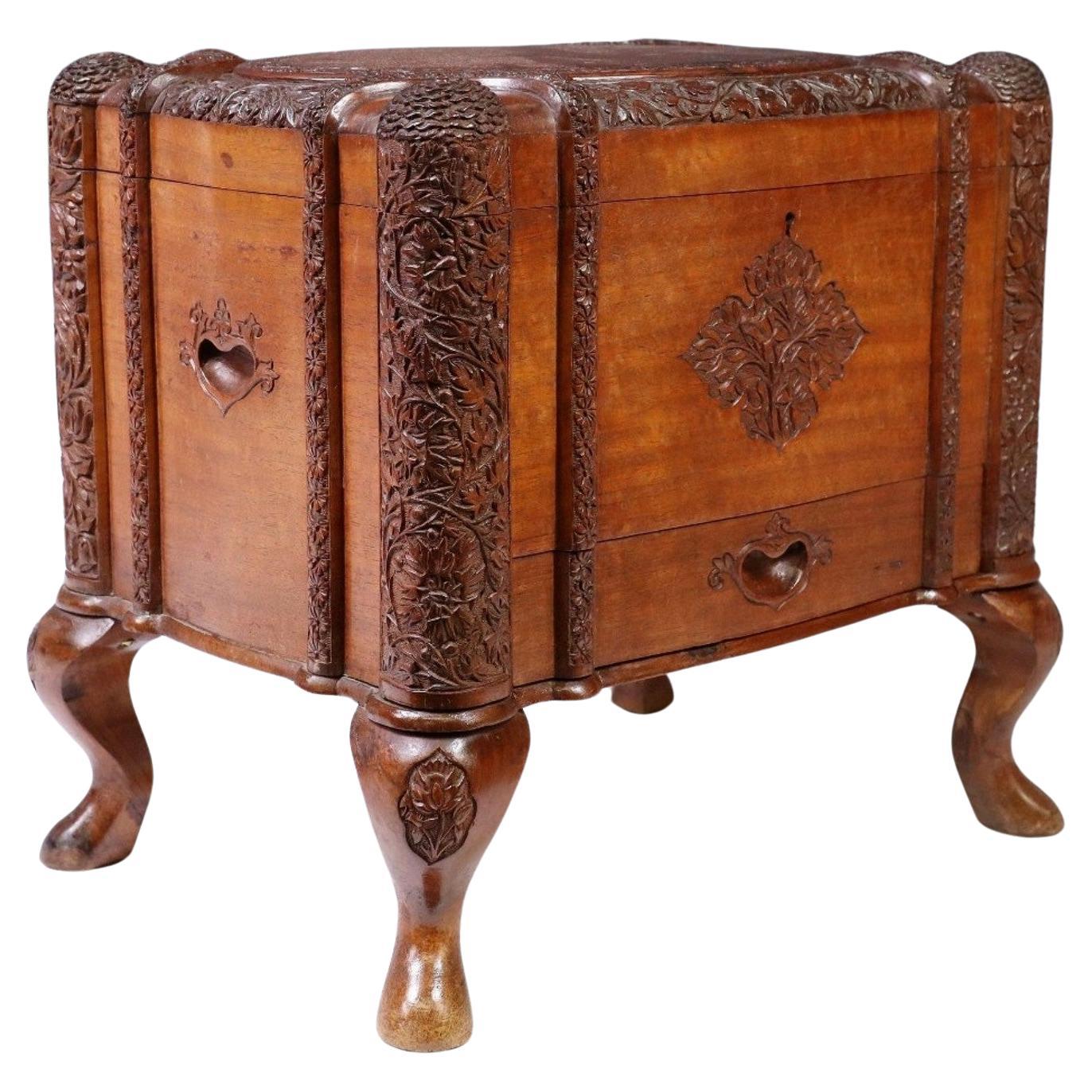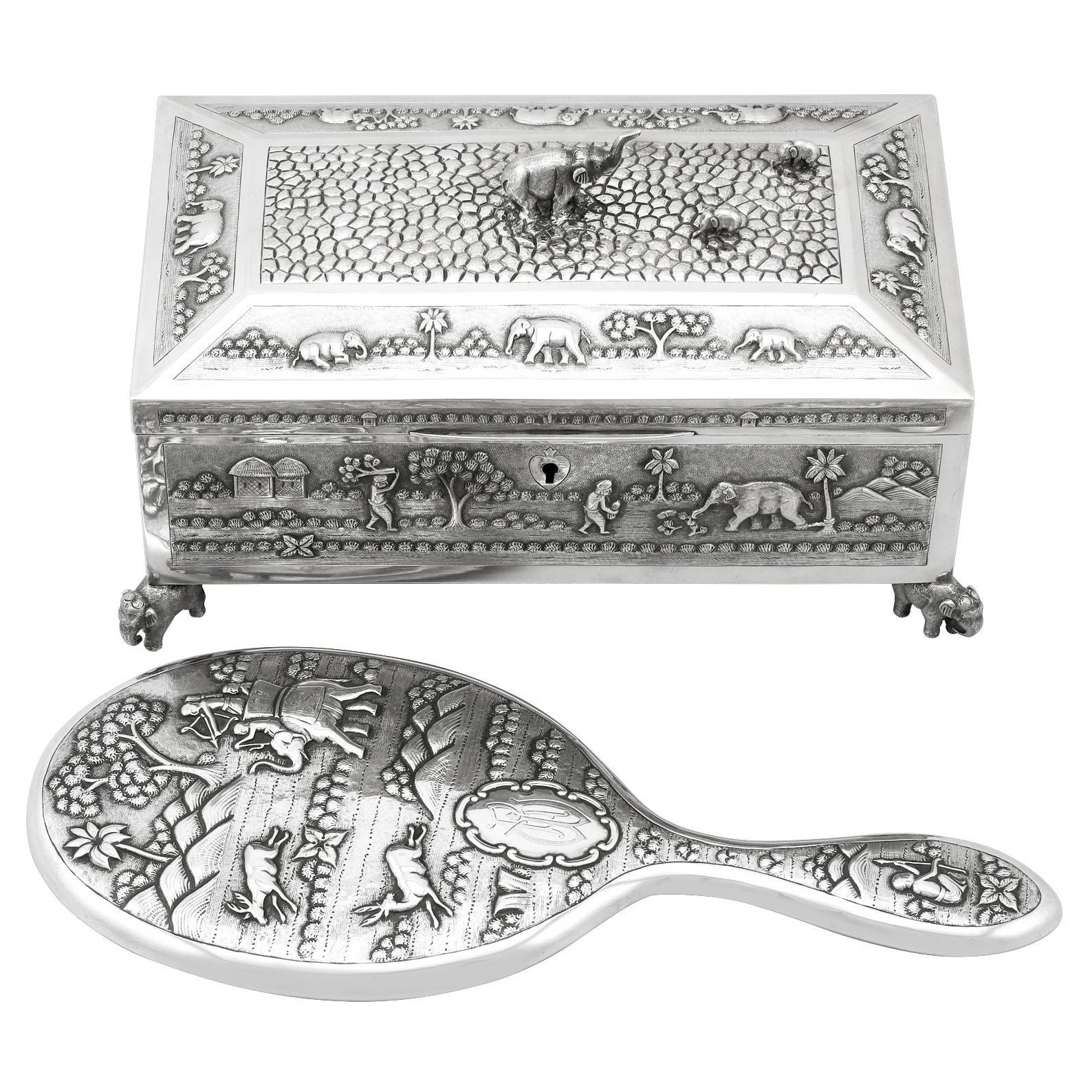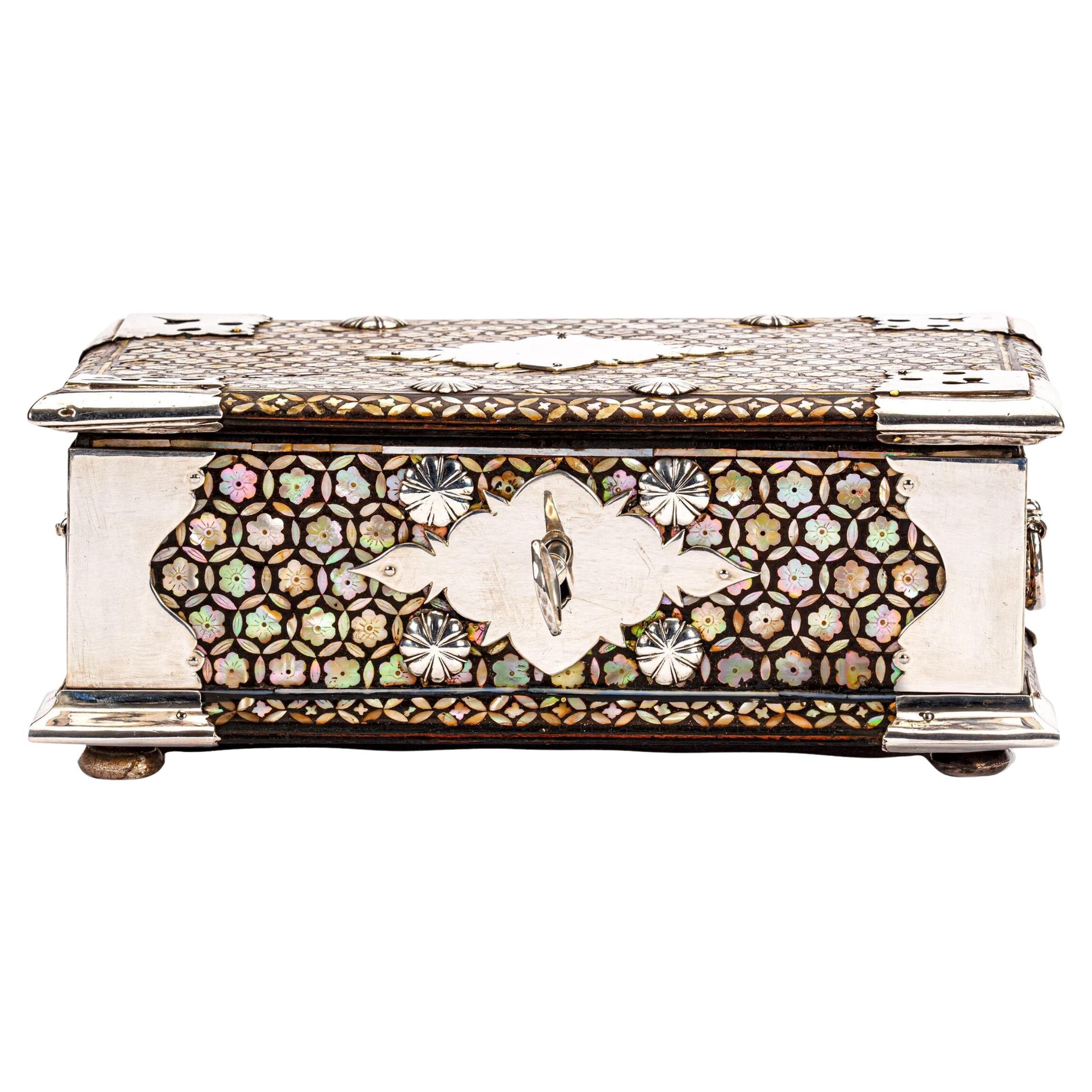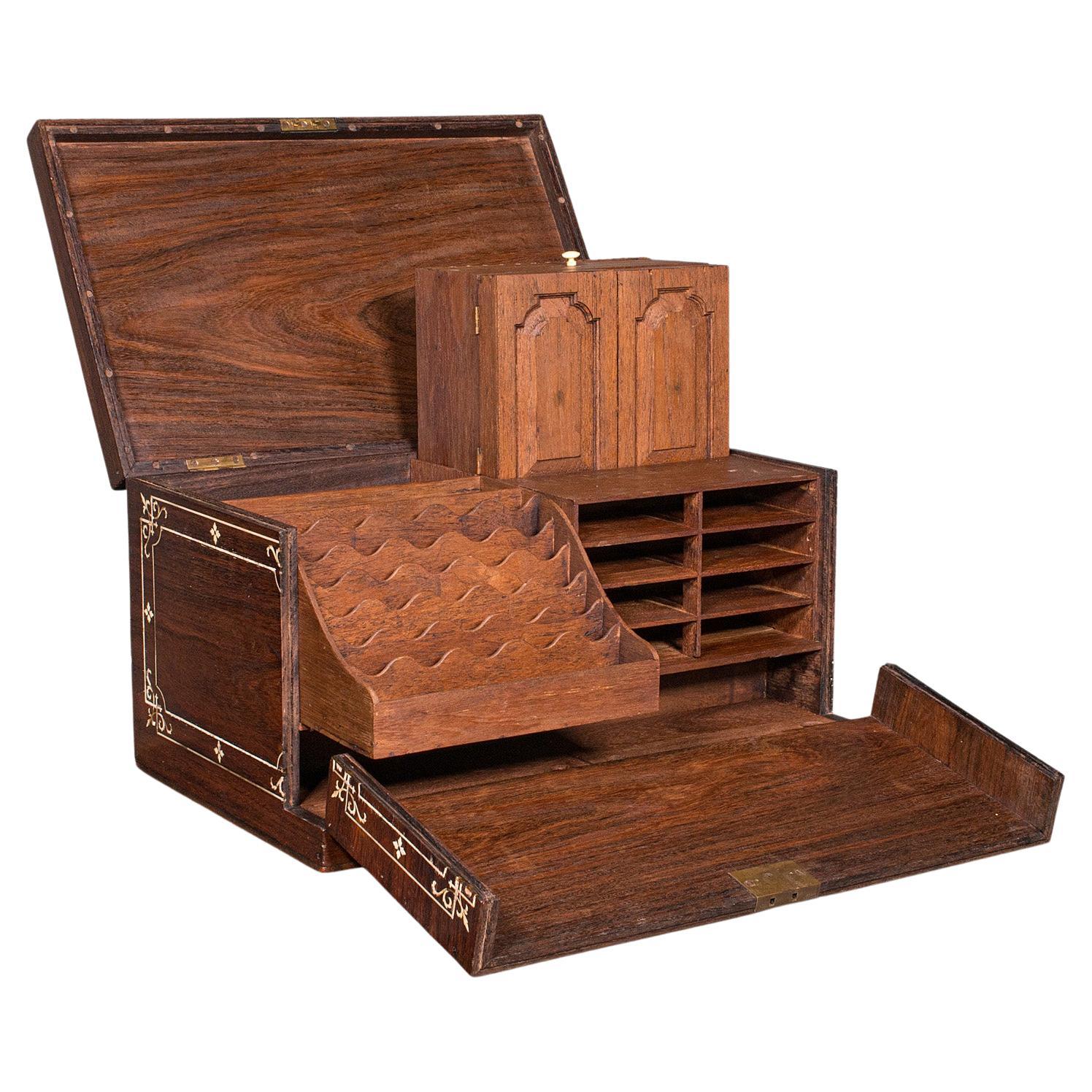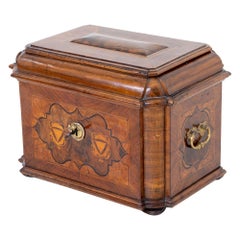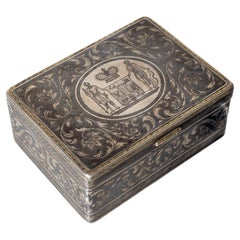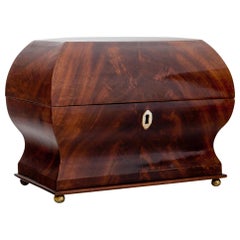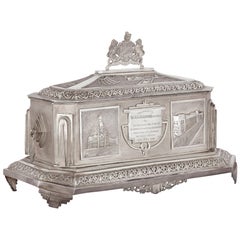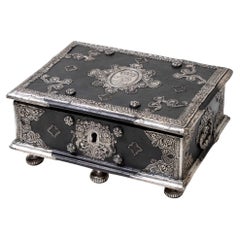
Casket, Indian Colonial Work
View Similar Items
Video Loading
Want more images or videos?
Request additional images or videos from the seller
1 of 17
Casket, Indian Colonial Work
About the Item
- Dimensions:Height: 11 in (27.94 cm)Width: 24 in (60.96 cm)Depth: 18 in (45.72 cm)
- Materials and Techniques:
- Period:
- Date of Manufacture:"Unknown"
- Condition:Refinished. Wear consistent with age and use.
- Seller Location:Greding, DE
- Reference Number:Seller: 078-06811stDibs: LU1014234030342
About the Seller
4.9
Gold Seller
These expertly vetted sellers are highly rated and consistently exceed customer expectations.
Established in 1987
1stDibs seller since 2013
446 sales on 1stDibs
Typical response time: 8 hours
More From This SellerView All
- Baroque Guild Chest, Mid-18th CenturyLocated in Greding, DEBaroque guild drawer with side brass handles and domed lid. The body stands on pressed ball feet, has rounded corners and is veneered on all sides in walnut with strapwork marquetry.Category
Antique Mid-18th Century Baroque Decorative Boxes
MaterialsBrass
- Silver tabatière, master Alexander Ivanov Shilin, Veliki Ustyug, around 1830Located in Greding, DERussian tabatière with a princely coat of arms and the city map of Veliki Ustyug, master Alexander Ivanov Shilin (1800-1842; niello smith master 1824-...Category
Antique 1830s Russian Decorative Boxes
MaterialsSilver
- Tea Chest, Germany First Half of the 19th CenturyLocated in Greding, DELidded chest with a curved lid and a concave belly, standing on brass ball feet. The escutcheon is inlayed in bone. Mahogany veneered.Category
Antique Early 19th Century German Biedermeier Tea Caddies
MaterialsBrass
$1,582 Sale Price20% Off - Marble Case with Inkwell, Italy 2nd Half 19th CenturyLocated in Greding, DERed marble casket with pyramidal lid and fitted brass vessels. Light bumps.Category
Antique Mid-19th Century Italian Decorative Boxes
MaterialsMarble
$1,933 Sale Price20% Off - Small Jewelry Box, Probably, Vienna, 19th CenturyLocated in Greding, DEWhite lidded box standing on small spherical feet with trapezoidal body and lid with a groove. The fittings are silver plated. Key available. Interior veneered in cherry.Category
Antique 19th Century Austrian Biedermeier Jewelry Boxes
MaterialsWood
$2,197 Sale Price20% Off - Black Basalt Tea Caddy, 1st half 19th centuryLocated in Greding, DECylindrical tea caddy made of black basalt with silver mounting and figural nodus.Category
Antique Early 19th Century European Neoclassical Tea Caddies
MaterialsSilver
You May Also Like
- Regency Leather Jewelry, Work and Writing CasketLocated in London, by appointment onlyA Regency leather jewelry, work and writing casket, the hinged lid enclosing a partitioned compartment, the moulded doors enclosing four drawers with faux book spine fronts, the low...Category
Antique Early 19th Century English Regency Jewelry Boxes
MaterialsLeather
- Anglo-Indian Art Deco Silver Presentation CasketLocated in London, GBThis Anglo-Indian silver casket is inscribed on a central panel to the front with the following: 'Presented to / Mr. A. L. Guildford, B.Sc. M.I.E....Category
Early 20th Century Indian Art Deco Decorative Boxes
MaterialsSilver
- Anglo-Indian Hardwood Casket with Bone InlayLocated in Stamford, CT19th century Anglo-Indian hardwood casket with bone inlay. India.Category
Antique Mid-19th Century Indian Decorative Boxes
MaterialsHardwood
- Fine Dutch Colonial Indonesian Casket with Silver Mounts, circa 1706Located in Amsterdam, NLA fine Indonesian Ambonya burl, ebony and teak casket with silver mounts Jakarta (Batavia), circa 1706 (year letter W (1705-1710), marked DV, probably Dirck Vooght The outer ri...Category
Antique Early 18th Century Indonesian Dutch Colonial Decorative Boxes
MaterialsSterling Silver
- Large Antique South Asian Colonial Carved Camphor Wood Table Box Jewelry CasketLocated in Forney, TXA scarce antique circa 1900 South Asian hand carved wooden decorative table box / jewel casket. Hand-crafted in the early 20th century, likely British Ceylon (present day Sri Lanka)...Category
Early 20th Century South Asian Jewelry Boxes
MaterialsWood
- 16th-Century Indo-Portuguese Colonial Mother-of-pearl Gujarat CasketLocated in Amsterdam, NLAn exceptional Indo-Portuguese colonial mother-of-pearl veneered casket with silver mounts India, Gujarat, 2nd half of the 16th century, the silver mounts Goa or probably Lisbon Measures: H. 16 x W. 24.6 x D. 16.1 cm An exceptional Gujarati casket with a rectangular box and truncated pyramidal lid (with slopes on each side and a flat top) made from exotic wood, probably teak (Tectona grandis), covered with a mother-of-pearl mosaic. The tesserae, cut from the shell of the green turban sea snail (Turbo marmoratus, a marine gastropod) in the shape of fish scales, are pinned to the wooden structure with silver ball-headed nails. The casket is set on bracket feet on the corners. The masterfully engraved decoration of the silver mounts follows the most refined and erudite Mannerist repertoire of rinceaux and ferroneries dating from the mid-16th century. The high quality and refinement of the silver mounts and, likewise, the silver nails that replaced the original brass pins used to hold the mother-of-pearl tesserae in place indicate the work of a silversmith probably working in Lisbon in the second half of the 16th century. The Indian origin of this production, namely from Cambay (Khambhat) and Surat in the present state of Gujarat in north India, is, as for the last three decades, consensual and fully demonstrated, not only by documentary and literary evidence - such as descriptions, travelogues and contemporary archival documentation - but also by the survival in situ of 16th-century wooden structures covered in mother-of-pearl tesserae. A fine example is a canopy decorating the tomb (dargah) of the Sufi saint, Sheik Salim Chisti (1478-1572) in Fatehpur Sikri in Agra district in the state of Uttar Pradesh, north India. This is an artistic production, geometric in character and Islamic in nature, where usually the mother-of-pearl tesserae form complex designs of fish scales or, similar to the dishes also made using the same technique, with the thin brass sheets and pins, stylized lotus flowers. The truncated pyramidal shape corresponds, like their contemporary tortoiseshell counterparts also made in Gujarat, to a piece of furniture used in the Indian subcontinent within the Islamic world prior to the arrival of the first Portuguese. This shape, in fact, is very old and peculiar to East-Asian caskets, chests or boxes used to contain and protect Buddhist texts, the sutras. A similar chest is the famous and large reliquary chest from Lisbon cathedral that once contained the relics of the city's patron saint, Saint Vincent. Both match in shape, having the same kind of socle or pedestal and bracket feet, and in their engraved silver mountings, featuring the same type of refined, erudite decoration. Their differences lie in the silver borders that frame the entire length of the edges of the chest (both the box and the lid), pinned with silver nails, and on the lock plate, shaped like a coat of arms in the Lisbon example. Given the exceptional dimensions of the reliquary casket...Category
Antique 16th Century Indian Jewelry Boxes
MaterialsSilver
Recently Viewed
View AllMore Ways To Browse
Colonial Casket
French Victorian Cranberry Crystal Powder Box
Gerstner Chest
Hermes Charleston
Horner Toffee Tin
Kralik Box
Line Vautrin Antagonismes
Mugler 2021
Sterling Miniature Suitcase
Travel Mahogany Canteen
Van Cleef Fairies Watch
Van Cleef Fairy Watch
Vintage Kleenex Box Covers
Tiffany Le Tallec
English Mail Box
Ceramic Biscuit Box
Vintage Limoges Boxes
Vintage Sprinkler Bottle
